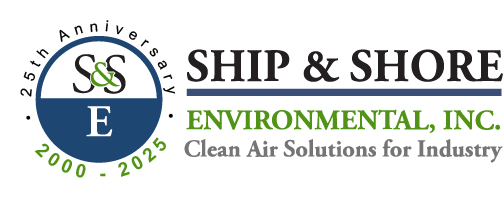Regenerative Thermal Oxidizers
What is a RTO?
A Regenerative Thermal Oxidizer (RTO) is an industrial air pollution control system that destroys volatile organic compounds (VOCs) in process exhaust air before it has the chance to pollute the environment. It converts emissions into CO2 and H2O through the use of combustion before exhausting them to the atmosphere as cleaner air
Since 1969, RTOs have been used extensively in manufacturing industries producing a high-volume waste stream containing low VOC concentrations such as paint manufacturing, flexographic printing and packaging, food processing, expanded polystyrene (EPS) molding, oil and gas, pharmaceutical, and many more. Today, RTOs are the most common and energy-efficient air pollution control technologies in use for a plethora of different industries such as aerospace, automotive, coil coating, chemical and petrochemical, biogas, asphalt manufacturing, and much more.
How it Works in a Glance:
Regenerative Thermal Oxidizers force process exhaust fumes in one direction over a passive heat exchanger, sending a stream of clean and cooled air through the exhaust stack into the atmosphere. Typical applications range from chemical processing, surface coating, wood finishing, heat set printing and more. RTOs destroy air pollutants at temperatures ranging from 1,500°F (815°Cto 1,800°F (980°C.
How it Works Technically:
- The process begins with a high-pressure supply fan that forces exhaust fumes into the Regenerative Thermal Oxidizer.
- Inlet switch valves direct the pollutant-laden air into one of the energy recovery canisters.
- The air continues to travel from the valve assembly up through the first heat exchanger canister where heat is absorbed from the ceramic media.
- The preheated air moves into the combustion chamber and the temperature is increased to VOC destruction by use of a burner.
- The pollutants are destroyed while in the combustion chamber at a required time (retention or dwell time).
- Once out of the combustion chamber, the clean, hot air moves through the second energy recovery canister where the ceramic media absorbs the heat generated during thermal oxidation.
- Finally, the cooled, clean air is routed into the atmosphere through outlet switch values and ultimately the exhaust stack.\
The Advantages of Using a Ship & Shore RTO at Your Facility:
- RTOs are Custom Designed for the Highest Reliability
- Cost Effective
- Durable and Thermal-Efficient VOC Destruction System with Ceramic Heat Storage Materials
- Reduces Harmful Gases at a minimum of 98%, with Option for Higher than 99% Destruction Efficiency Rate (DRE)
- Reduces CO2 Due to High Heat Recovery and Energy Efficiency
- Two Poppet Valves Controlled by One Operator
- Capable of Absorbing Heat Rapidly
- Stable Under Thermal Cycling Conditions
- Effective and Reliable for Pollution of Most Industries
- Safe and Easy to Use, with Remote Capabilities


